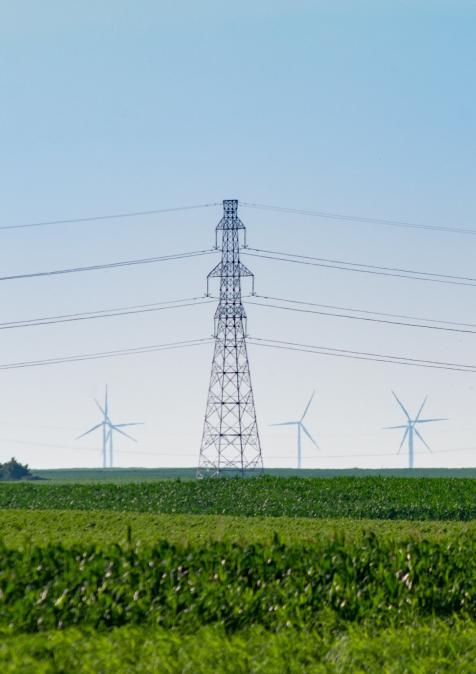Publications /
Opinion
It all began in 1924, when the World Energy Council (WEC) was established in order to harness the collective expertise of the global energy community and translate vision into tangible outcomes. In April 2024, the city of Rotterdam hosted the 26th Congress of the World Energy Council, whose theme was “Redesigning Energy for Better Lives and a Healthy Planet”.
It is not about a single energy transition, but rather many energy transitions.
The concept of energy transition is not limited to a single phenomenon. Rather, it encompasses a multitude of transitions that occur within the context of energy.
The world as we know it today is confronted with a multitude of heterogeneous challenges in the field of energy. This is transforming not only the multifaceted ways in which energy policies are approached around the world, but also bringing into focus a broader concept of the term energy transition, which suggests that there should be numerous energy transitions. The concept of energy transition is understood differently in developing countries, where the 600 million people lacking access to electricity in Sub-Saharan Africa must be considered in the context of global energy strategies. This is where the “Humanizing Energy Transition” goal of the World Energy Congress finds its rationale and purpose, because energy transition cannot and will not occur without people’s participation. Consequently, it is essential to take those people into account in any transition process.
At the inaugural session of the Congress, Vaclav Smil drew attention to the historical context of energy, emphasizing the importance of acknowledging the lessons learned from the past. Significant progress has been made in the field of energy. If we consider the lessons learned over the past century, we can identify a number of 27-year periods. In 1924, for instance, the impact of Saudi oil was not yet a factor, nor was there a concept of international gas transportation. At that time, coal was the dominant energy source, with efforts focused on pulverising and utilising it for energy. In 1951, the ability to split the atom was discovered, leading to the discovery of vast oil reserves in the Middle East. These reserves were subsequently distributed to Europe and Asia. In 1974, there were assumptions that that 100% of US electricity would soon be derived from nuclear sources. However, by 1980, nuclear energy accounted for a mere 10% of the total energy supply, and today the energy mix differs significantly from what we would have predicted.
Angela Wilkinson, Secretary General of the WEC, emphasized the growing energy efficiency and declining emissions per unit of energy consumed noting that, although the process of absolute decarbonization has not yet begun, there is a clear and ongoing trend towards this goal. Nevertheless, while methods for measuring emissions have been established, it is still a challenge determining the performance of renewable energy. Furthermore, she emphasized the need to accelerate decarbonization in a just, equitable manner, rather than merely projecting it onto our demand. It is, therefore, necessary to engage with this demand in order to find a solution.
The Future Energy Leaders joined Wilkinson in emphasizing the need to address adaptation challenges in our daily lives before implementing energy transition solutions, stressing the importance of resilience-building measures. This includes investment in grid development and reinforcement for integrating these solutions, which requires a significant financial commitment. In Africa, where interest rates are high and there is a discrepancy between industry capabilities and community needs, there is a question of how to deploy technologies effectively while meeting climate goals.
These energy transitions require people, technology and financing mechanisms.
In order to facilitate the aforementioned energy transitions, it is necessary to consider the role of people, technology, and the necessary financing mechanisms.
There are two main challenges in financing the energy transition. Firstly, there is a dearth of energy access in developing countries. Secondly, there is a reluctance to disburse funds from the private sector. The need to address the issue of financing for the African continent is of utmost urgency, given that currently only 3% of total energy investment is directed towards the continent. The multifaceted problem of financing energy transitions cannot be solved by a single solution or actor. This is where private actors, the public sector and multilateral development banks (MDBs) can collaborate in addressing the lack of financial resources for green infrastructure projects in Africa. One potential avenue for this financing is through the public sector, thereby providing a layer of insurance for private investors, while MDBs and PDBs have an overview of the ongoing projects, challenges, and needs of developing countries.
Conversely, there is a need for private investors to demonstrate a greater willingness to take risks. While investing in readily available energy projects may be an attractive proposition, it is insufficient. This represents a dual challenge for investors in developing markets, where the lack of frameworks and project structures makes investment more risky, while the cost of capital remains high.
Therefore, a combination of financing sources is required to facilitate the transition to a more sustainable energy future. This includes the provision of concessional financing for storage, new technologies and other initiatives that are not yet commercially viable. There is a great deal of discussion about the need for funding for energy transition and green and sustainable bonds. However, these parties do not appear to be contributing to the financing that is required. While there is liquidity available, it is not linked to a concessional factor. Investors are driven by the pursuit of optimal returns. In order to facilitate the growth of modern green funds, it is imperative that the government take the initiative to encourage green investing and funding.
When it comes to financing the energy transition in developing countries, the Lebanese Minister of Energy and Public Finance has observed that, in most geographies, public policy perspectives require urgent attention to measures that can lower the cost of energy transition. These include standardisation, bigger markets, higher market integration and public guarantees that the government can offer to unleash investment. However, according to him, the public sector should only step in if something goes wrong, which would be cost-efficient.
To make these transitions happen, however, we first need transmission and skills.
No transition can occur without transmission. We must diversify our energy sources while keeping a close watch on our existing fleet and optimizing its performance. It is crucial to introduce new technologies but also to ensure the modernization of our current infrastructure to accommodate them. It is essential that the process of transitioning away from fossil fuels not compromise energy security. Hydrocarbons will remain a part of our energy landscape so we must differentiate between carbon and emissions. While emissions must be addressed through initiatives, carbon presents an opportunity to substitute hard-to-abate materials in the future.
People are at the core of any transition. Developing the right skill sets is crucial for advancing to the next level of the value chain. Investing in our people ensures that we have the capacity for valuable input. We must rethink how we create jobs and invest in our workforce. By ensuring the right energy mix and input, we can add value as we progress towards 2050.
This is why we must focus on people-centric energy transitions. If we want energy transitions to succeed, they must happen with people’s active involvement.
In conclusion, the humanization of energy, as articulated by the World Energy Council, hinges on broader community involvement to expedite the transition to clean and equitable energy systems worldwide. Additionally, targeted reskilling initiatives, particularly within the sphere of energy transition, are essential. These efforts are vital in ensuring that individuals recognize their role in shaping a sustainable future and in providing companies with the necessary talent to realize their sustainability objectives and seize opportunities in both established and emerging sectors.






